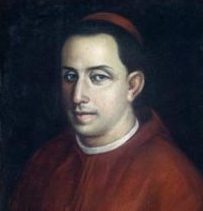The following night it was resolved to make a vigorous sortie in order to discomfit the enemy who were fortifying themselves with all haste in the churches of which we have just spoken, namely, Nuestra Senora de Guia, Malate, and Santiago. Two four-pounders were detached, with the necessary artillerymen and the men needed to manage those cannons, fifty musketeers of the regular troops, some militiamen, and eight hundred Indian natives with their spears. In charge of this expedition was Monsieur Fayette (a Frenchman in the service of Manila). He attacked the enemy at their posts.[57]
The action lasted the greater part of the night, with a sharp fire on both sides; but Monsieur Fayette having recognized the invincible strength of the corps opposed to ours, and that fresh forces were continually coming to the enemy, ordered our men to retire a bit, and take position before the church of San Juan de Bagumbayan, where he kept his post all night, firing on the church of Santiago until nine o’clock of the morning of the twenty-fifth, when all the troops came back under protection of a new force which was sent them from the city.“ From that time until three o’clock in the afternoon, firing was suspended, because an officer of the hostile camp was received in the place, who was charged with a special mission.[58]
The bombardment continued without cessation. It did much damage to the buildings and killed some persons. The bombs that were picked up entire, were eighteen inches in diameter. They were kept to send back to the enemy in two mortars which were found in the royal magazines. That same night, some cannons loaded with grape were discharged on the enemy.
[57] The Marquis de Ayerbe (Sitio y conquista) gives this force as consisting of two companies of fifty Spaniards, and more than two hundred Indians and mestizos with spears, muskets, and two eight-pounders. He was seconded by Jose del Busto.
[58] Of this sortie, Le Gentil says (ii, p. 243): “This sortie was only a kind of boast and bravado, for how could one flatter himself, with at the most sixty men for I do not take an account of the two or three citadels, which it would really have been necessary to have besieged in order to try to dislodge them; for the walls of all these churches are made of cut stone, and are as thick as the walls of the royal observatory, namely, five or six feet thick, and are octagonal.” The reinforcements sent to Fayette consisted of two Spanish companies and 1,500 Indians, commanded by Pedro lriarte; and later one other company commanded by Fernando de Araya.
